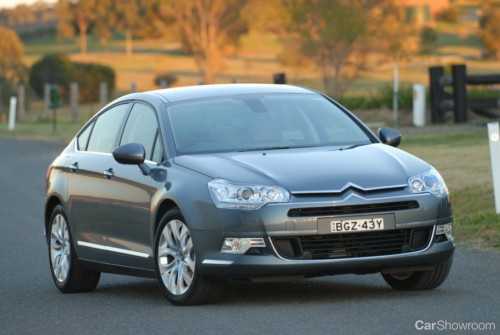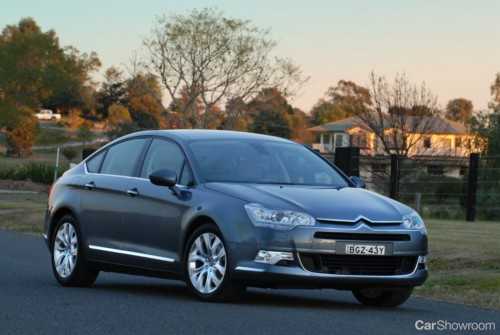Seductive But Comprimised
The second generation Citroen C5 represents a marked departure from the original car which arrived in 2001, as well as a move upmarket. Although a mid-life facelift smoothed out the styling considerably, that first C5 was a beauty in the eye of few beholders. It was bought for function, size, economy and value. This time around Citroen is probably being optimistic in pitching its mid-sizer into the market sector currently dominated by smaller cars such as the C-Class Mercedes-Benz, BMW 3-Series and Audi A4. But the decision not to offer a petrol engine but, rather, a choice between 2.0-litre and 2.7-litre diesels is a wise one, which reflects the buyer profile.
Despite being owned by PSA, manufacturer of Peugeot with which most Citroens share numerous components, the marque still enjoys a loyal following. The new C5 should alienate none of these customers while attracting many new ones. In fact, that’s pretty much what the old model did, but in among Hondas and Mazdas rather than the prestige Germans. The cheapest variant is the $51,990 Comfort 2.0-litre HDi but the model featured here is the $65,490 Exclusive 2.7-litre HDi.
The twin turbocharged 2.7-litre HDi is a most impressive powerplant, also seen in even more upmarket cars such as the Jaguar XF. With 440 Nm of torque at hand, it is all about effortless performance and miserly consumption. PSA has long been a leader in diesel engine technology and this one is a beauty and key to the appeal of the C5 Exclusive. Real world mixed driving fuel economy is about 8.5 litres per 100 kilometres but steady open road cruising can see the complicated trip computer register numbers beginning with 5. Driving through a smooth six-speed automatic (to the front wheels, of course, like all Citroens since the 1934 Traction Avant), the bigger diesel gives strong performance not fully conveyed by the 8.6 second zero to 100 km/h split. At higher road speeds so many of Mr Newton’s metres make for V8-like overtaking.
Uncanny quietness and significant comfort are other areas of great appeal. Like all Citroens, the wheelbase is long in relation to overall length and the C5 beats all those aforementioned rivals into the proverbial cocked hat when it comes to accommodation. A bonus is a huge 439-litre boot which swells much further thanks to the split-fold rear seat.
Citroen buyers also expect high levels of safety and a brilliant ride, courtesy of the marque’s famous rise-and-fall hydro-pneumatic suspension. On safety, the C5 excels as a five-star performer, but on the second criterion it falls short of its heritage. At cruising speeds the ride is supple but not in the manner of the flagship C6 or even the legendary 1955 DS19 ‘Goddess’. That’s because more attention has been paid to handling. But this is still no BMW through a series of corners, being too nose-heavy. The overall dynamics are very good but the C5 excels neither in ride nor handling, while its electric steering gives none of the road feel expected of a Citroen. Worse, at low speeds the ride is actually noisy. Why the C5 suffers in this way when the flagship C6 does not raises a question about Citroen’s engineering priorities. At least the braking is exemplary.
This elegant car deserves consideration but it seems likely that the less expensive variants constitute the best argument for buying French rather than German or Japanese. It boasts superior finish to earlier Citroens. Rivals include the BMW 3-Series, Audi A4 and Mercedes-Benz C-Class and also the Peugeot 407. (The C5 is a superior car at least to this PSA stablemate!)
Likes
Polished French exterior and interior designs; deliciously comfortable seats; nice driving dynamics; great value
Dislikes
If you don't understand Citroen/French design, the looks might not be your cup of tea; 2.0-litre works hard

















